Could These Crystals Help Us Travel Through Time?
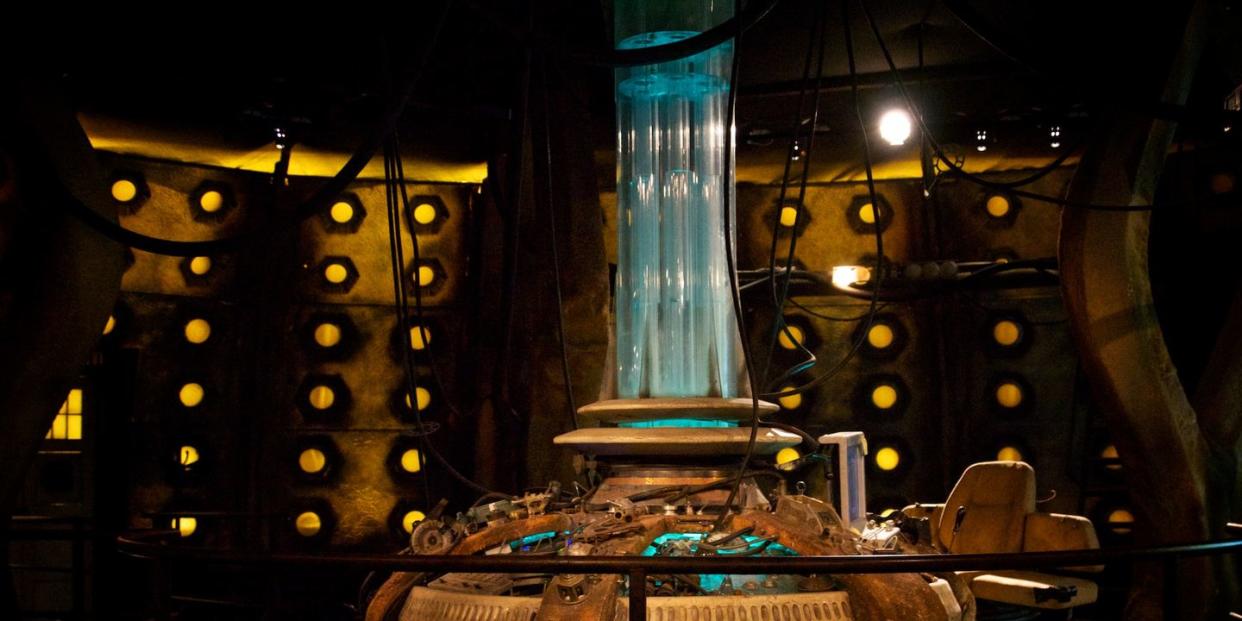
If you’ve ever watched Doctor Who, you know—and love—TARDIS, the sentient, police box-shaped spacecraft that enables the titular time lord to travel through space and time. In Doctor Who lore, TARDIS is powered by time crystals, those exotic artifacts portrayed elsewhere in science fiction as the ultimate tools for zigzagging across dimensions. But sci-fi, of course, has repeatedly proven to be the precursor of real-life science, which begs the question: Could time crystals actually help us visit the past and future?
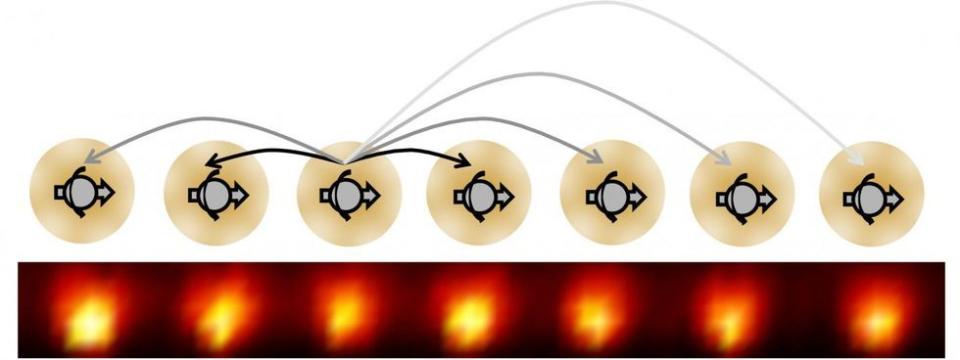
Breaking the Symmetry of Time
To wrap your head around time crystals, imagine snowflakes or rubies—crystals that tantalizingly corrupt spatial symmetry. Unlike the perfectly symmetrical empty space, there are spots on these spatial crystals that look different than other spots, such as their edges. In much the same way, then, a time crystal breaks the symmetry of time: their atoms love being in different points in space at different points in time, shifting directions as if a pulsating force flipped them.
Even more so, time crystals can move without absorbing energy because they’re created from trapped ions—blends of electric or magnetic fields that can capture charged particles, usually in a system isolated from an external environment, with the capacity to tirelessly gyrate, even at their lowest energy-point (their so-called ground state).
Vladimir Eltsov, an applied physicist at Aalto University in Finland, who, together with professor Grigori Volovik and doctoral candidate Samuli Autti, took a time quasi-crystal and morphed it into a wholesome and superfluid time crystal in May 2018, is electrified by the virtues of time crystals—even if he doesn’t (yet) believe in their power to turn us all into budding Doc Browns.
Elstov instead prefers to think about how time crystals can advance us technologically. For example, time crystals can help us make highly sensitive magnetic-field detectors or components of quantum computers. And such is Eltsov’s faith in these fascinating structures that he believes they can be our ally in tackling the most theoretical and highbrow stumpers related to the fundamental laws ruling the universe.
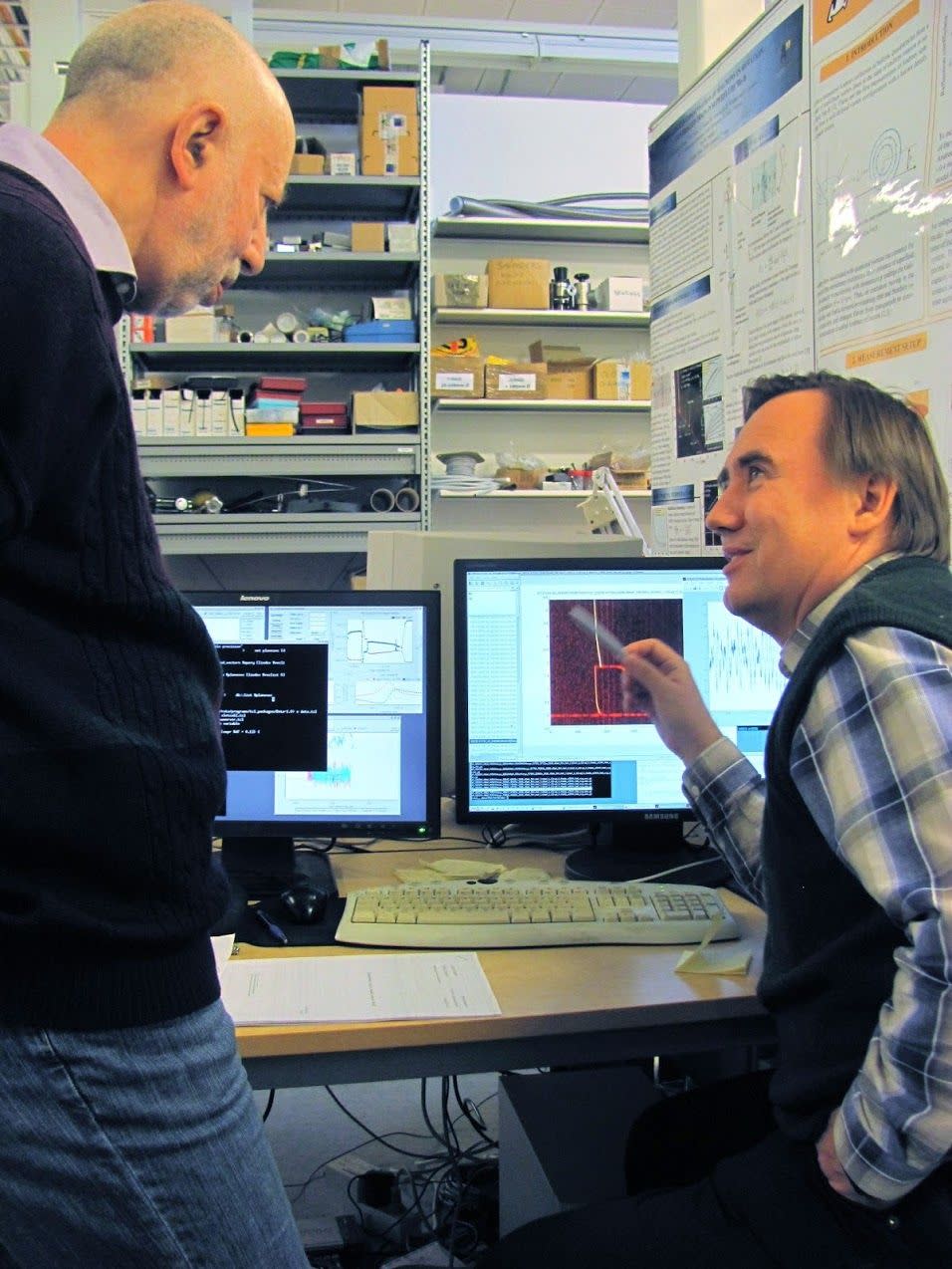
In 2012, Massachusetts Institute of Technology theoretical physicist and Nobel Laureate Frank Wilczek first hypothesized that the periodicity (the quality of occurring at orderly intervals in space) of crystals was an affair of time, too; Wilczek envisaged a system at its lowest energy state, with the ability to freeze in space like a normal crystal. In a hot minute, however, Patrick Bruno from the European Synchrotron Radiation Facility in Grenoble, France—followed moments later by Haruki Watanabe from the University of California, Berkeley, and Masaki Oshikawa from the University of Tokyo—branded Wilczek’s suggestion as impracticable.
“Where on Earth would a system in its ground state find the energy to produce the periodic motion in the first place?” they barked. Only in a system that was forced out of a state of balance—its equilibrium state—by some kind of driving force could periodic time crystal behavior be attained, Watanabe and Oshikawa said. That was it. Scientific circles quickly resurfaced the notion of “Floquet systems,” or quantum systems in which some type of driving force endows the system with periodicity (originally grasped and mathematically calculated in the 19th century by mathematician Gaston Floquet).
In 2015, theoretical physicist Shivaji Sondhi and his Princeton University colleagues published a paper that made the theoretical basis for how time crystals could actually exist.
“We did not have time crystals specifically in our mind at that point, but non-equilibrium states of matter,” says Vedika Khemani, back then a member of the pioneering Princeton team, and today, a condensed matter physicist at Stanford University. The team was investigating what happens when certain isolated quantum systems, made of a potpourri of interacting particles, are frequently prodded by shining a laser on them.
Counterintuitive to conventional physics, which maintained that mayhem would ensue once the systems would heat up, the Princeton team’s calculations showed that under certain conditions, the particles would glue together to form a phase of matter with properties previously unseen.
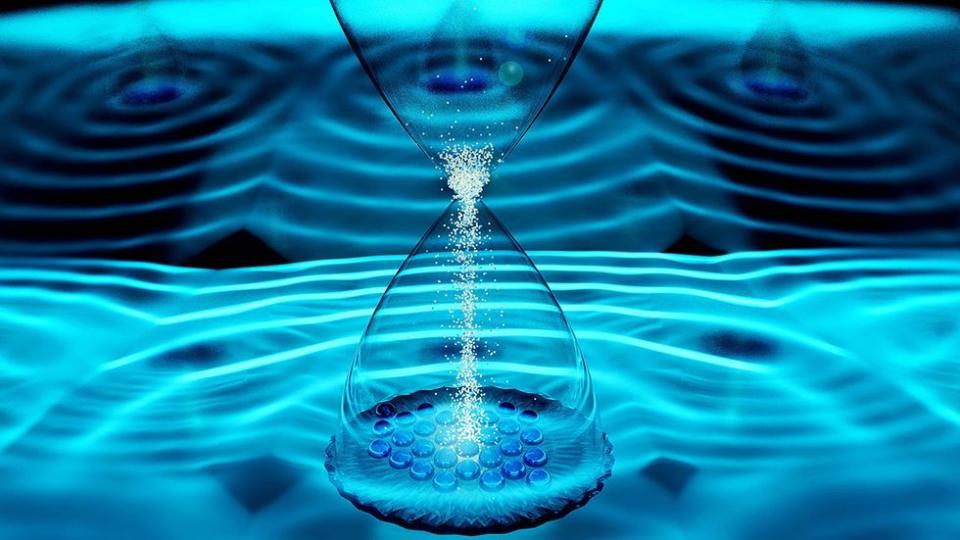
Picture a pendulum. A conventional pendulum that isn’t powered by battery or some other generator will eventually succumb to friction and slow down. Even in an “idealized” pendulum placed in a frictionless environment—in a vacuum—the interactions between the multiple particles that make up the pendulum will create internal strains, and again lead the pendulum to inertia. An even further idealized pendulum that has only one particle will be able to go back and forth forever, but it’s not a unique time crystal. In contrast, the Princeton team’s pendulum was one in which many particles could continue pulsing forever without requiring a constant feed of energy. It was a whole new state of matter.
Soon, two groups of experimenters began attempting to build time crystals in the lab. The first, from Harvard University (where Khemani was also a member), experimented with creating an artificial lattice in a synthetic diamond. The second, from the University of Maryland, used a chain of charged particles called “ytterbium ions.”
Prestigious universities like Princeton, Harvard, and UC Berkeley aren’t the only institutions that have jumped headfirst into investigating time crystals. Even the U.S. military has devoted significant resources to tapping into the mystifying qualities of these conceptually surprising structures.
If Not Crystals, What About ...
So if the research into time crystals shows no signs of exhaustion, perhaps they can allow time travel after all?
“No,” says Khemani, bluntly. “It is a brand-new phase of matter that’s really special, one that’s really exotic. But that’s all.” And her view is unanimously shared by all scientists we asked, including Stephen Holler, a physicist at Fordham University who experiments with crystals in optical systems.
“Time crystals might be instead used as quantum memory storage units,” Holler says. Quantum communication, the transmission of information using quantum bits, can provide us with a very secure way of transmitting information from one place to another, something quite useful for, say, the banking sector or national security. It seems that time crystals’ maximum durability under circumstances elsewhere impossible may as well hold the secret to achieving coherence in quantum computing, echoes Eltsov.
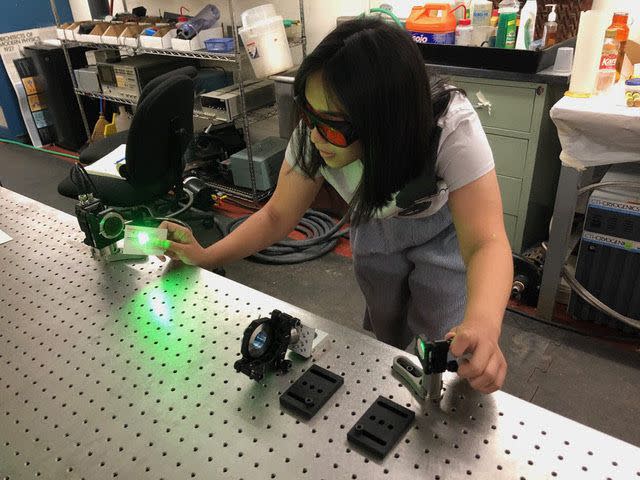
We’ll need to wait at least five years, however, before quantum communication systems emerge into the marketplace and start to make their way into our commercial systems, says Holler. Meanwhile, scientists like Khemani remain cautious about the whole conversation surrounding quantum communication.
Still, is it so wrong—and outside the realm of scientific possibility—for us to still want to bend time through some means other than time crystals?
Here’s the good news: “Time travel cannot be excluded in principle,” says Eltsov.
Now here’s the slightly disappointing news: “But to understand it would require immense energy densities we are unable to produce in the lab either now or in the foreseeable future.”
Think of the Large Hadron Collider (LHC) at CERN, the European Organization for Nuclear Research. The LHC, the world’s largest and most powerful particle accelerator, weighs over 38,000 tons, runs for 27 kilometers in an underground tunnel, has particles guided by titanic superconducting magnets frenzying about it to speeds of 11,000 circuits per seconds, and cost about $4.8 billion. That’s really, really massive—and we’d still need orders of magnitude beyond that to even look into time travel, Holler says. We’re simply not ready.
“It’s completely unfeasible with current technologies,” says Curt von Keyserlingk, a theoretical physicist at the University of Birmingham, who contributed additional theoretical work with Khemani and Sondhi on time crystals in 2016. “But this does not mean it is impossible,” he swiftly adds, prompting us to take a look at the work of physicist Kip S. Thorne.
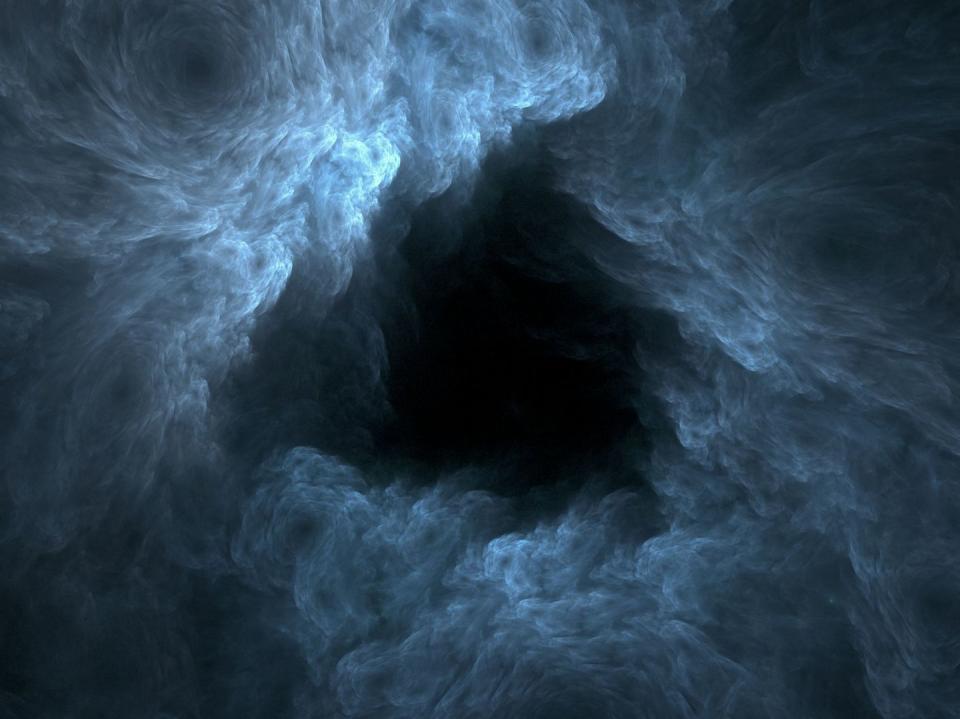
Finding and Filling the Cracks
In 2017, Thorne was awarded the Nobel Prize in Physics alongside Rainer Weiss and Barry C. Barish for the first detection of a gravitational wave. Thorne is best known in the unforgiving world of physics as the originator of sci-fi friendly ideas. He’s the one who advised cosmologist and writer Carl Sagan on resorting to a hypothetical traversable wormhole connecting two periods in time to transport Jodie Foster through the universe in Contact, the 1997 film based on Sagan’s 1985 novel. He also helped create a black hole for Interstellar and said that wormholes could be used for space travel and time travel.
Thorne offered explanations for several logical conundrums regarding time travel, including the paradox of going back in time through a wormhole and accidentally killing your grandfather, thereby also killing yourself. (How can you exist if your father doesn’t exist, since the sperm half responsible for his conception was destroyed … by you?) In 1991, Thorne did some mathematical calculations and found that such paradoxes couldn’t arise, but were instead replaced by an infinite number of other potential outcomes. (You could go back in time and mess around with your grandfather all you want, but there’s no way you could have killed him, otherwise you wouldn’t exist to kill him in the first place.)
Then there’s the theory of the many worlds hypothesis, which could resolve some of the implications of going back in time and altering the future. This hypothesis suggests we live in a near-infinity of universes that have the same physical laws and values, but exist in different states and are arranged so that no information can pass between them. Essentially, with every decision we make, the universe splits into multiple realities, and we’re completely unaware of the alternative scenarios our exact replicas experience in the other universes.
“Time travel would, in the theory of multiverses, have us wind up on one of these other universes, so it would not necessarily be a straight linear path forward to back for us, but a crossing between universes,” says Holler. “I’m not completely sold on it, but there are plenty of smart people working on it and seem to believe it’s very, very feasible,” he continues.
But the incredibly prepossessing theory of multiverses lacks proof in the form of solid calculations, says von Keyserlingk. For him, the problem with the many worlds interpretation and time travel isn’t that they’re necessarily fiction, but that we may currently be missing the mathematical tools and even philosophical ideas to negotiate these things. They’re at the very theoretical end of physics, he says: things that we can really only speculate on, whereas science at its best is just “informed speculation.”
“It can sometimes happen that nature presents us with issues that no one has figured out before,” von Keyserlingk says. “One of the issues is that we have a fairly fixed idea of what space and time is. Resolving the hardest problems in physics requires throwing away a lot of our preconceived notions.”
In a more mathematically, philosophically advanced future, then, could we discover more time-traveling properties of time crystals? Don’t hold your breath, Khemani says. While the crystals do hold a few tiny secrets of the universe, the only thing they have in common with time travel is just one word: time. That’s at least for now—but maybe not forever.
You Might Also Like

